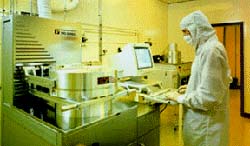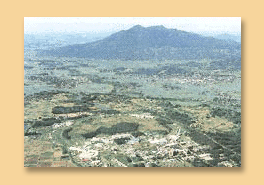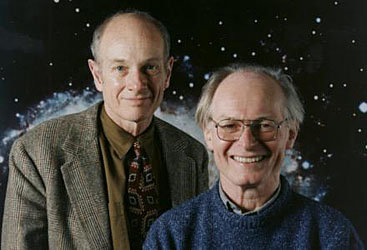
![]()
Linkages To Research Programs of Other Countries
NSF’s Overall Approach
The Foundation stands firmly behind the principle of open and reciprocal access to research and education facilities and programs by U.S. researchers and students and those of foreign countries. By and large, the Foundation encourages the U.S. scientists and engineers it supports to make their own arrangements abroad. These arrangements are made on an ad hoc basis or within the framework of university, center, or laboratory agreements with foreign partners.
The Foundation also maintains a range of intergovernmental agreements or other less formal arrangements with science and engineering organizations in other countries. Some of these (China, Japan, Russia, example) are elements of broader intergovernmental agreements managed by the Office of Science and Technology Policy, the Department of State, and other federal agencies.
While these agreements are not typically concluded for the purpose of ensuring reciprocal access, they usually contain provisions for doing so and the Foundation has, on occasion, invoked them.
While NSF has long developed access to and strong bilateral working relationships with counterpart organizations in individual European countries, a comparable relationship with the European Union, a multilateral organization, continued to evolve. In December 1997, the US and the European Commission (EC) of the European Union (EU) signed an " umbrella agreement" to cooperate in science and technology. The most important effect has been to open cooperation to US scientists in such European Union research fields as materials research, manufacturing research, the social sciences, and areas of biotechnology. Since the signing of the Agreement, NSF has developed "implementing arrangements" for cooperation in computer science and technology, materials research, environmental research, and the geo- and Polar sciences.
In FY2001, more opportunities opened for the US research community as current NSF awardees became eligible in a Dear Colleague Letter to request support for participation in an international training-through-research program of the EC. Specifically, NSF invited grant-supplement requests proposed in partnership with European teams that were requesting support from the Research Training Network (RTN) activity of the EC's Improving Human Potential Programme (IHP).
 Mineral Transformations, an EU Research Training Network, investigates structural, kinetic and thermodynamic aspects of transformation processes in minerals. The network involves teams from the seven institutes indicated on the map of Europe. |
Problems of access are generally beyond the scope of this report and will not be covered except to note the following. Although the Foundation generally does not see broad access problems looming on the horizon, there are two specific issues of potential great concern for the future: laws and treaties being considered that could jeopardize the full and open exchange of scientific data and fees for the use of facilities or for access to research sites.
Regarding the first, NSF and several other federal science agencies supported a National Research Council (NRC) study A Question of Balance that identifies and evaluates the various existing and proposed policy approaches (including related legal, economic, and technical considerations) for protecting the proprietary rights of private sector database rights holders, while promoting and enhancing access to scientific and technical (S&T;) data for public-interest uses.
With respect to access to ecological research sites, NSF participates in interagency activities related to international conventions (e.g. The Biodiversity Convention) and negotiations regarding access to genetic resources and sharing of benefits from bioprospecting, such as the Meeting of the Ad Hoc Open-ended Working Group on Access and Benefit-sharing.
The Foundation maintains and participates in over a dozen formal bilateral agreements (e.g., with Brazil, China, France, Hungary, Indonesia, Japan, Korea, Mexico, Czech Republic, Russia) of the many bilateral S & T agreements between the US and other countries and about twice that number of informal bilateral arrangements for cooperation in all NSF-supported areas of science and engineering. Most of the NSF agreements are centrally managed and implemented on behalf of the Foundation by NSF/INT.
U.S. scientists (partially funded by NSF/GEO and INT) are working with colleagues from Russia (funded by the Russian Foundation for Basic Research (RFBR)) and from Japan to study subduction processes and paleoseismology along the Kurile-Kamchatka-Aleutian Arc. About 150 scientists (including many from these three countries) will gather at the 3rd Biennial Workshop on Subduction Processes along the Arc which will be convened in Fairbanks in June 2002 to review scientific progress in this area and to identify potential future research. The several thousand mile long tectonic boundary plate - one of the most active sites of earthquake and volcanic eruptions on Earth - crosses borders from the volcanic Aleutian Arc of southern Alaska to the Kamchatka/Kuril Arcs of Russia and Northern Japan.
 Also,
research directorates manage (or, in some cases, co-manage with other
federal agencies) and implement subject-specific bilateral (or, in a few
cases, multilateral) agreements or informal arrangements. Most of these
are in earth, ocean or atmospheric sciences (NSF/GEO), polar programs
(NSF/OPP), and engineering (NSF/ENG).
Also,
research directorates manage (or, in some cases, co-manage with other
federal agencies) and implement subject-specific bilateral (or, in a few
cases, multilateral) agreements or informal arrangements. Most of these
are in earth, ocean or atmospheric sciences (NSF/GEO), polar programs
(NSF/OPP), and engineering (NSF/ENG).
Joint Programs
In addition to any arrangements related to the global- or regional-scale projects described in the "Global-Scale Projects" section, the Foundation supports the following joint programs designed to facilitate the involvement of NSF-supported U.S. scientists and engineers in international collaboration:
A joint program with Japan, the US-Japan Joint Optoelectronics Program (JOP) promotes the supply of prototype optoelectronic devices and services for development of computing applications. Importantly, the JOP offers a secure and convenient system for offering and obtaining optoelectronic prototypes.
ENG represents NSF on the US Joint Management Committee(JMC) for the JOP, comprising Department of Commerce (NIST and Office of Technology Policy), NSF, Defense Advanced Research Projects Agency, Department of Energy, Department of State; . NIST chairs the US JMC. The JOP, first implemented as a three-year experiment in FY 1995, has been extended through FY 2002. The JOP has developed a unique international broker system that brings users and suppliers of optoelectronics together, by providing users with novel prototype optoelectronic devices, circuits, and modules through access to leading-edge optoelectronic fabrication facilities.

|
Rochester Photonics Corporation Diffractive/Refractive Achromats, provide high performance imaging over wide spectral ranges, a US prototype JOP technology. Prototypes cannot be catalog items, and they must be for the development of computing applications. "Computing" is defined broadly, to include processing, interconnects, computer networks, and peripherals. |
The Japanese Ministry of International Trade and Industry (MITI) has provided approximately $800K/year to the US in support of the JOP US broker organization. NSF and Defense Advanced Projects Agency (DARPA) have each provided $200K/year in seed funding to US users of this technology. A total of 42 transactions of prototype devices have now been completed between the US and Japan users and suppliers; 14 of these transactions were in FY 2000.
One award to Carnegie-Mellon University, Multilingual Concept Hierarchies for Medical Information, is striving to extend the state of the art in high performance multilingual information access, both in terms of underlying science and its technological realization via a functional prototype for English and German in the biomedical domain.
NSF also considers proposals for cooperative activities involving France’s Institut National de Recherche en Informatique et Automatique (INRIA). International Digital Libraries fosters cooperation between NSF and digital libraries projects supported by the United Kingdom, Germany and the European Union,as described in the Global Scale chapter of this report.
NSF-CONACyT continues as a joint program of NSF/CISE with Consejo Nacional de Ciencia y Tecnologia (CONACyT) (National Council of Science and Technology Research) of Mexico, supporting efforts in international cooperative research and research infrastructure in computer science, information systems, computer engineering, and engineering research.
NSF-CNPq, a joint program of NSF's Computer and Information Sciences Engineering (CISE) Directorate and Conselho Nacional de Desenvolvimento Cientifico e Tecnologico da Pesquisas (CNPq, or National Council of Scientific and Technological Research) in Brazil announced in FY2000 a pilot activity to support new efforts in international cooperative research in any CISE-related area.
|
Map showing Antarctica and location of Vostok Ice Core. Colors indicate elevation. The joint program with Russia and France on drilling ice core at Russia’s Vostok Station in Antarctica is a noteworthy example of international cooperation. Vostok Station -- a Russian scientific outpost, which once recorded the lowest temperature on earth (-126.9 degrees Fahrenheit) -- is located in the vicinity of the lake. As part of a joint U.S., French and Russian research project, Russian teams have drilled down into the ice covering the lake, producing the world's deepest ice core."Lake Vostok: A Curiosity or a Focus for Interdisciplinary Study," concludes that conditions under the ice may approximate those on Europa, a frozen moon of Jupiter, and so may indicate whether life may be able to exist in harsh conditions elsewhere in the solar system. (NSF PR 99-47) |
NSF/ENG has supported the deployment of rapid-response reconnaissance teams following earthquakes and tsunamis. In FY2000, ENG supported visits following the 1999 earthquakes in Taiwan and Turkey.
The NSF/ENG Pacific Earthquake Engineering Research Center (PEER) Lifelines Program hosts collaborative research with Sakarya University and Middle East Technical University (METU) in Turkey documenting the incidents of ground failure resulting from the August 1999 Kocaeli, Turkey Earthquake. Also, PEER hosts cooperative work with Catholic University of Peru in geotechnical earthquake engineering reconnaissance of the June 2001, Southern Peru Earthquake.
Partially funded by the NSF, the Earthquake Engineering Research Institute (EERI) conducts post-earthquake investigations for the purpose of improving the science and practice of earthquake engineering and earthquake hazard mitigation practices. An EERI Special Reconnaisance Earthquake Report on the Chi-Chi, Taiwan Earthquake of September 21, 1999 reports on the area affected by the earthquake surveyed by an EERI reconnaisance team.

Fault surface rupture across Shih-Kang Dam, Chi-Chi, Taiwan Earthquake of September 21, 1999. |
Access To Foreign Facilities And Research Groups
Some the areas of science and engineering in which significant international interaction occurs are the physical sciences, especially physics and materials research.
 |
 |
 In atomic, molecular, and optical physics, NSF/MPS supports US researchers working at CERN (Geneva), KEK (Japan), Rutherford-Appleton (England), and in France, Germany, and Brazil. |
|
In particle physics, NSF supports about 80 researchers to work on the LEP and NOMAD detectors at CERN and the ZEUS detector at DESY (Hamburg). Involvement will also be at the ATLAS and Compact Muon Solenoid (CMS) detectors at the Large Hadron Collider (LHC) at CERN, when it is completed. (See "Overseas Facilities" Section)
U.S. researchers in nuclear physics are supported to work at TRIUMF (Canada), PSI (Zurich), GSI, HERA, and MAMI (Germany), Novosibirsk (Russia), NIKHEF (Holland), and CERN.
International interaction is critical to world leadership in science, especially in the MPS fields. Professor James Cronin of the Uniiversity of Chicago was one of twelve scientists awarded the 1999 National Medal of Science for their discoveries and lifetime achievements. Cronin was cited as a leader in creating an international effort to determine the unknown origins of very high-energy cosmic rays.
|
In materials research, an estimated 10-15% of NSF-supported researchers are engaged in research collaboration with foreign scientists and as many as half of them take sabbaticals overseas. In the area of electronic structure, there is a trend toward cooperation in Europe. US investigators in materials research make frequent use of the Institut Laue Langevin (ILL) (Grenoble), the CNRS/MPI Grenoble High Magnetic Fields Laboratory (GHMFL) (Grenoble), the National Institute for Materials Science (NIMS) (Tsukuba, Japan), and Oxford Instruments (England).
![]()
![]()

